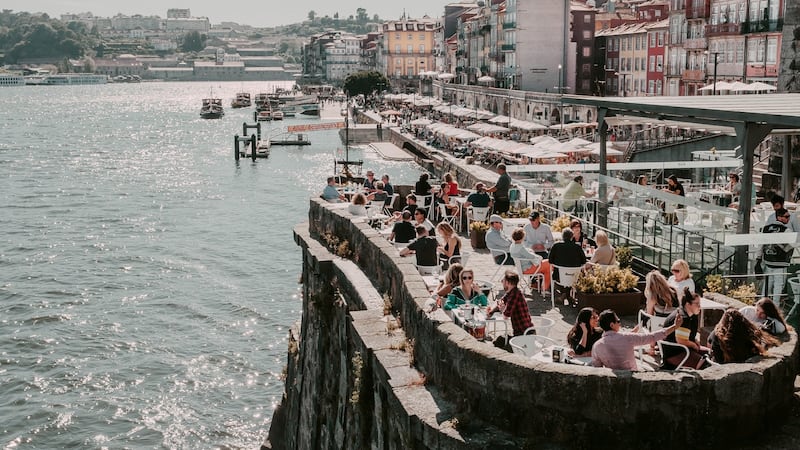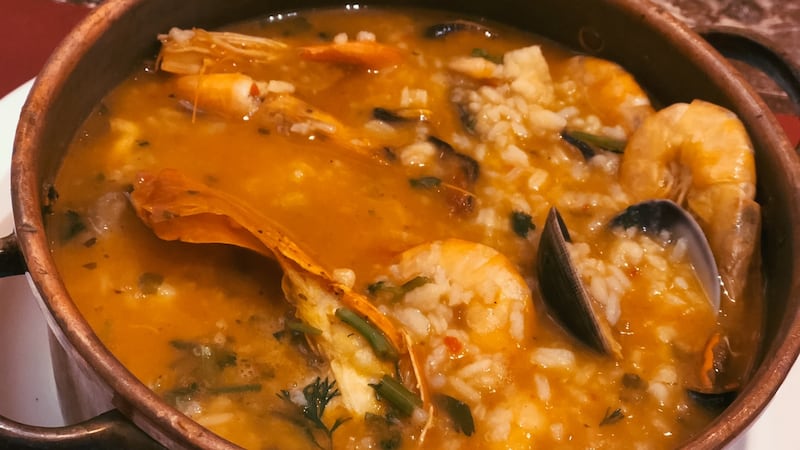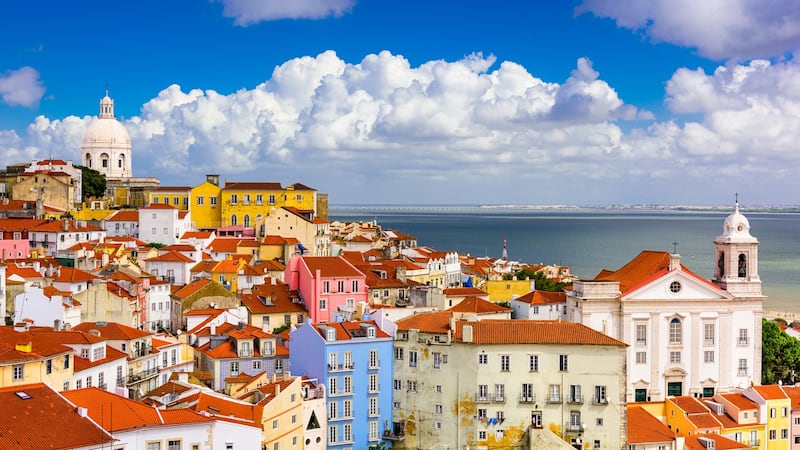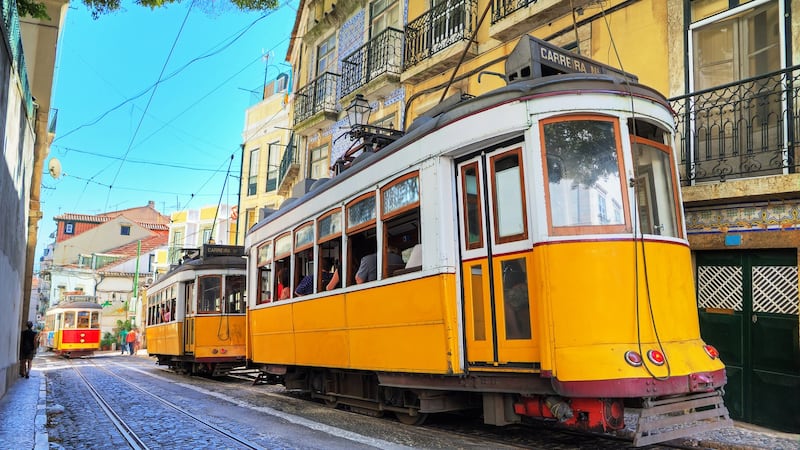Portugal is famously affordable, and your euro will go further here than anywhere else in Western Europe – even in the tourist hot spots of the Algarve or the capital, Lisbon.
But just because Portugal is comparatively better value than other Mediterranean destinations, there are still plenty of decisions that need to be made to make sure you get full bang for your buck.
So, how can you take full advantage of Portugal’s stunning beaches and fascinating cities? How can you make sure that you are enjoying the best of the country’s good value cuisine and reasonably priced accommodation? Here’s how.
What are the less expensive regions?
In an already pretty inexpensive country, you'll still notice a marked difference in value between areas favoured by international visitors and those more popular with local tourists. The only issue is accessibility, as flights from Ireland only fly into Faro, Lisbon or Porto, so you'll either have to rely on public transportation or car hire.
Along the Algarve’s western coast are the protected wild landscapes of the Parque Natural do Sudoeste Alentejano e Costa Vicentina, a wild nature reserve with some of the country’s most stunning beaches. Near the resort of Vale de Telha is the Praia da Arrifana, backed by a dramatic cliff; others worth seeking out are the Praia do Monte Clérigo and the Praia da Amoreia. The beaches have become popular surf destinations, with most congregating on the main town in the area, Aljezur, all whitewashed houses and narrow, cobbled streets.
But the real treat is Alentejo, which abuts on to the Algarve and covers roughly a third of the country – but gets few international visitors relative to its size and its far more popular neighbour immediately south. But this is Portugal at its finest and most affordable: a gorgeously rugged coastline, golden plains dotted with whitewashed villages, a strong viticulture and a handful of beautifully preserved medieval towns. And it’s easily reached on the Algarve motorway from Faro Airport.
The coast (Alentejo Litoral) draws the bulk of the summer holidaymakers, who come for the beaches and the seafood, not to mention the abundance of activities, from surfing and kayaking to mountain biking and walking: the Rota Vicentina is a long-distance trail that stretches along the southwestern coast (there’s an inland option too) to Cabo de São Vincente in the Algarve.
The main resort along the Alentejo coast is Vila Nova de Milifontes, a low-key alternative to any of the resort towns in the Algarve. Except in August, when it seems every Portuguese holidaymaker is here to enjoy the beautiful beaches and some of the best seafood you’ll eat anywhere.
Lisbon is already western Europe’s most affordable capital, but Porto is even cheaper, roughly 10 per cent so. It’s not as big as Lisbon, doesn’t have the same collection of sights (except for Ribeira, a Unesco-protected maze of medieval alleys lined with pastel-coloured houses that is one of Europe’s most beautiful neighbourhoods) but is even friendlier and more relaxed than Lisbon.
Can I eat well without spending heavily?
Like most of their Mediterranean brethren, the Portuguese love to eat well and take great pleasure in the feast of seafood, roast meats, fresh bread, tarts and wines that makes up the local larder. Local markets (mercados) are a fabulous way to indulge in the country’s culinary bounty, and a great way to pick up tasty picnic ingredients.
It seems obvious, but restaurants that cater to locals rather than visitors offer better value and (usually) better cuisine. They’re usually full of people speaking Portuguese, the menus come in one language (hello, Google Translate) and, as the best of them are usually family-run, there’s invariably an older person in the kitchen or serving drinks behind the bar.
In restaurants, it’s common for wait staff to bring bread, olives, cheese or sardines to your table when you sit down. This is the couvert and it’s never free: if you don’t want it, just send it back untouched (and make sure it’s not added to your bill).
Most local restaurants have a prato de dia, a fixed-price lunch menu that features a local dish (or two) that is often half the price of what you’d pay if you ordered it a la carte for dinner. And unless you’re a real wine connoisseur, don’t even think about ordering anything other than the house wine, or vinho caseiro, which is invariably good enough to pass local muster.

In the Algarve, seafood rules, but in most of the fancier, sea-facing restaurants fresh fish is sold by the kilogram, so you won’t know how much your main course will cost until you get the bill.

You’ll keep costs down if you avoid the lure of the seafront restaurant and find somewhere in a back alley – tatty furniture, paper tablecloths, a basic chalkboard menu and a local clientele are good signs, and the fish is no less fresh for having been transported that extra 200m. It’s here that you’ll also find the best versions of the Algarve’s signature dish, cataplana, a seafood stew named after the clam-shaped copper cooking pot in which it’s made.
In bigger towns and cities, the local rule applies even more as most of the restaurants in the tourist zones generally serve indifferent fare at bumped up prices – even if those prices seem reasonable to visitors coming from Ireland.
Some of the tastiest meals can be had in tascas, traditional (and often tiny) neighbourhood restaurants that are long on delicious home cooking if quite short on decor. The only downside is that the best of these are rarely found anywhere near the tourist zones and in the bigger cities, like Lisbon or Porto, you’ll usually have to make your way to neighbourhoods that are otherwise of little interest to the visitor.
Another cheap alternative is the adega, Portuguese version of the wine bar, which serves traditional dishes washed down with great, inexpensive wines straight from the cask. Otherwise, you can always stick to cafes, which usually serve sandwiches and snacks – unmemorable but grand in a pinch.
What about accommodation?
So long as you book well in advance, accommodation is generally pretty cheap – even if you are planning to visit in the peak season of July and especially August (when virtually the whole country goes on holiday). Coastal hotels, including in the Algarve, offer substantial off-season discounts, usually from mid-October through to the end of March or Easter.
A great alternative to a hotel is a pensão, the Portuguese version of a B&B. These (often) family-run guesthouses come in all types, offering anything from basic rooms with few amenities to well kitted-out rooms the equivalent of a midrange hotel. What they all have in common is a personal feel you won’t find in bigger hotels.
The Portuguese version of the Spanish parador is the pousada (not to be confused with the pousadas de juventude, or youth hostels), a state-run network of hotels in beautiful or historic properties, including castles, monasteries and palaces. In high season they're expensive, but at other times they can be surprisingly affordable; they're also cheaper midweek and offer lots of off-season discounts as well as reduced prices for over-55s. Check out posada.pt.
Airbnb and other private hosting options are pretty widespread throughout the country, with all kinds of accommodations priced according to size, location and time of year. A great local version is the network of 17th- and 18th-century manor houses and farms managed by Turihab (turihab.pt, solaresdeportugal.pt or casasnocampo.pt), where you are hosted by the owners in the main house or, in some cases, in separate cottages on the estate for greater privacy. As most of the properties are in out of the way rural areas, you won't find fancier digs for cheaper (and you get the chance to observe country life up close and eat some pretty good grub).
What’s free or discounted?
It’s easy to visit Lisbon or Porto without reaching too deeply into your pocket, as most of the main draws are outdoors, from strolling through the Alfama and Ribeira neighbourhoods to enjoying the cities’ stunning hilltop views.

In Lisbon, the underground Roman ruins at the Núcleo Arqueológico da Rua dos Correeiros offer free tours, while most of the churches are free to enter. In Belém, the avant-garde Museu Coleção Berardo is free on Saturdays.
While all national museums are free on Sunday to Portuguese residents, only a handful are free to all, including the Museu do Aljube, the Museu do Teatro Romano, the Museu de Lisboa Palácio Pimenta and the Atelier-Museu Júlio Pomar – all in Lisbon.

If you’re planning some heavy-duty sightseeing in the capital, you should invest in the Lisboa Card, which includes free transportation on buses, metros and trams as well as free entry to 35 museums – and it’s available in one, two- and three-day versions. The Porto Card does virtually the same thing for that city.
What are the car hire deals and pitfalls?
Use an online rental agency like Rental Cars (rentalcars.com), Holiday Autos (holidayautos.com) or Portugal Car (portugalcar.net) to find the best advance-booking rates among the main rental companies.
Car Amigo (caramigo.eu) is a car-sharing service that works pretty much like Airbnb – you rent a privately owned, peer-reviewed car for a price that is often half that of a normal rental, including the company's own insurance cover. Whatever you do, be sure to book in advance as the worst rates by far are those offered by the big international firms on arrival.
If you need a car for five or six days, check to see how much it will cost for seven, as you may find a cheaper weekly deal – with no penalty for dropping the car off earlier.
Any other tips to keep my costs down?
Don’t bother with taxis – anywhere. Sure, they’re cheaper than in Ireland, but in a country with a good public transportation network they’re an unnecessary expense. Avoid the high season if you can in favour of the shoulder seasons of March to May and September to October, respectively. It’s still warm but the crowds are fewer and the prices lower. Plus, it’s easier to meet the locals. Pick up fresh produce at local markets. And walk, especially in the cities: it’s the best way to explore and it’s free.











